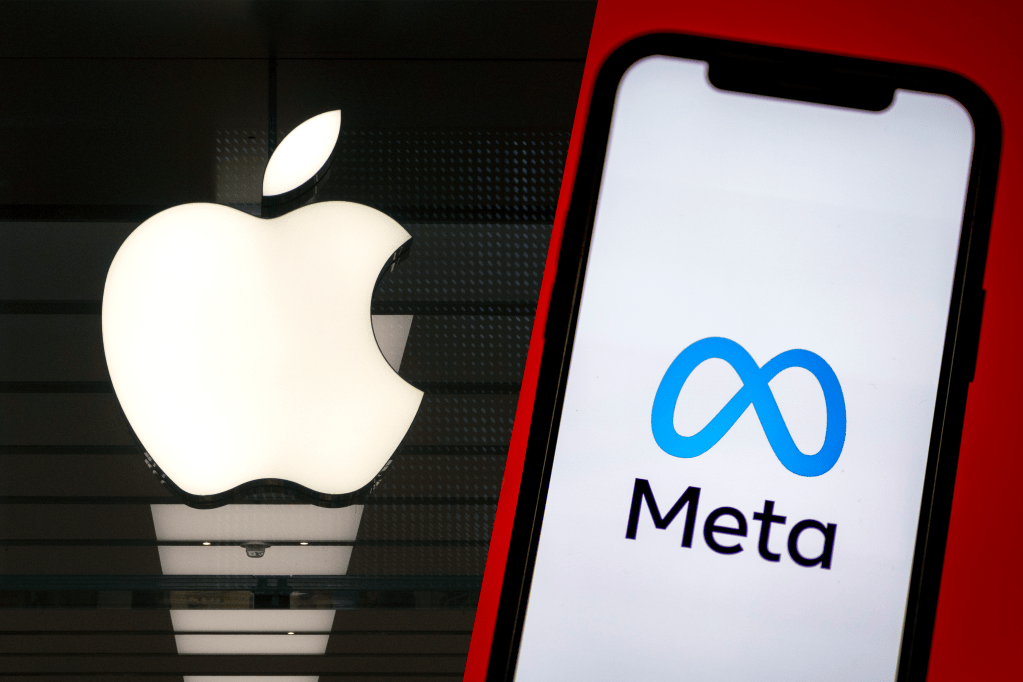The recent developments in the payments industry around open banking actually provide a fantastic case study for what fintech can achieve – albeit in a rather roundabout and surprising way. Whether you’re a payments geek or not, if you’re at all interested in innovation in financial services, this could be worth knowing about.
If you’re not familiar with open banking payments, it’s the structure under which the banks were ordered by regulation to open up APIs (which are essentially data plug sockets) to allow a third party with the relevant FCA licence (or a fintech) to put a message into the bank’s systems. Those messages are always made on behalf of one of their customers with the customer’s consent, essentially telling the bank to make a push payment (a bank transfer), from that customer’s account to some other account.
That means that as a customer you no longer have to use your bank’s portal to make a payment, or your card; you can instead use another platform operated by, for eaxmple, a fintech to make the payment for you straight out of your bank account like a normal bank transfer. And you can even do that directly from a merchant’s website.
The regulation mandating this has been in place since 2018 (through the EU’s revised Payment Services Directive, transcribed into law in the UK through the Payment Services Regulations 2017). It has had some traction – for instance if you had to pay any money to HMRC in January you may well have done so through an open banking portal – but it is still far from being mainstream.
Card payments vs open banking payments
In November 2023, you may have heard about the release of the Garner Review – an independent review led by Joe Garner, the ex-CEO of Nationwide, into the current state of the payments ecosystem with recommendations as to what should happen next.
The results of the review were in many ways unsurprising, including that:
- there is an extremely high penetration in the UK of card-usage, whether debit or credit card, and merchants were often found to be unhappy that they don’t have a credible alternative to receiving non-cash payments over the card networks, with all the associated fees;
- the UK is very unusual in not having a viable mass-market account-to-account method for merchants to receive payments, such as Pix in Brazil, M-Pesa in Africa or UPI in India; and
- although it hasn’t really taken off yet, we do actually have the means to make such an account-to-account method every bit as successful and ubiquitous in the UK as debit and credit card payments, in the form of the Open Banking payment rails.
The key takeaway from the Garner Review was that, for Open Banking to really take off and achieve mass adoption in the UK market, a number of regulatory nudges and commercial incentives would be needed in a handful of areas.
Regulatory nudges and commercial incentives
The first thing that the Garner review recommended for open banking payments was that in order to achieve mass-market adoption, there needed to be greater trust in the system in terms of consumer protection, and dispute resolution if something goes wrong – which you get through card payments as a matter of course. Regulatory nudges in this direction could go a considerable way towards improving mass-market confidence in open banking as a payment method.
The second recommendation was that in order to make the open banking rails viable as a mass-market proposition, they needed to be supported by a viable commercial model. To date, the open banking rails (those APIs and the infrastructure around them), have been produced and funded by the banks, under a collection of regulatory mandates. They are completely free to use for fintechs, and it’s no secret that the banks haven’t really been incentivized to keep them maintained outside the letter of those regulatory mandates.
There’s been discussion for quite some time in the industry about “commercial APIs” – that is to say open banking rails that are paid for, but which have functionality above and beyond what’s mandated by the regulations so that they can operate more like other forms of payment. But progress on that front has been slow and there is as yet no agreement as to what a commercial framework should look like.
The third development is the discussion around what’s known as the “Future Entity”, that being the entity that is meant to replace the “Open Banking Implementation Entity” on a permanent basis to oversee the running of the open banking rails. There seems to be a recognition that the operations of that entity need to be paid for somehow – and probably by the entities that use it most (including fintechs) – rather than it all being funded by the banks without seemingly much commercial upside.
Two additional pieces worth mentioning in this context:
- firstly, a move towards a “New Payments Architecture” – which is essentially updated infrastructure for push payments; and
- secondly, the Payment Systems Regulator’s incoming rules on authorised push payment fraud (its APP fraud reimbursement requirement) which will effectively mandate refunds for customers who are tricked into making account-to-account payments to a fraudster.
Each of these has been introduced to apply across the whole payments ecosystem but has a particularly acute effect on open banking.
Innovation in financial services
Here is the slightly surprising conclusion: when you put all of these developments together you find that suddenly, out of an innovation that started to take hold about 10 years ago, you get something that starts to look very much like one of the existing card schemes. Why? You have: payment rails that are just about ubiquitous; a central body overseeing them; a large range of players connected to them; those players paying fees for use of the rails and the running of the central entity; and a mechanism for disputes and refunds that protects customers.
It all looks really very similar to what the card schemes already do, even if hardly anyone had initially been thinking of or planning for that to be the case.
That conclusion could, on the face of it, be somewhat demoralising in the sense that, well, what is the point of all this innovation if you end up with pretty much what you had to start with?
There is, however, another dimension to all of this that addresses the point of all this work and is a great example of what innovation in financial services can do and what it can mean for users of the financial services ecosystem.
The point is that it’s not the same as the existing card rails. Instead of a huge portion of the payments system relying on only two or three commercial organisations (the card schemes), with particular modes of practice and commercial incentives, the open banking payments ecosystem could offer merchants a way to receive payments that is much cheaper than accepting cards (I’ve heard the figure 70% cheaper a number of times), where they receive the money much more quickly (in fact, almost instantaneously) and all on payment rails that should effectively have the backing of something looking a bit like a government mandate.
User-friendly
Open Banking as a means of payment also promises to be a much more streamlined and user-friendly experience than traditional means of payment on the bank rails, for example traditional bank transfers, and to provide meaningful competition to the incumbent card schemes.
As a user it will provide additional choice on how to pay, in particular, making it far easier to pay an online merchant that you haven’t bought from before (because you just have to authenticate the transaction rather than putting in all your card details), and that in turn makes it easier for small businesses to compete with giant platforms without having to use – and pay for – a card payment overlay like Apple Pay or Google Pay.
These are not small differences. They are a real change in the level of competition in a sector that each of us uses every single day, but with the learnings and safeguards that apply to the traditional card schemes (who are incidentally ideally placed to take advantage of those very same innovations). There is also scope for what innovative fintechs are best at: disrupting markets and layering other benefits and use cases around the core offering to enhance the user experience.
There is a word of caution here though, which is the reason for the “could” above. There is an ongoing consultation process around what the Future Entity should look like, how it should be governed, paid for, and crucially what its mandate should be. This also goes to the heart of the entity’s role in those crucial aspects of dispute resolution and commercial parameters. If these are issues are dealt with well, there is everything to play for in terms of benefits to the payments industry and the wider economy.
But if they are not done well, such that actually there isn’t much of a tangible difference or benefit to merchants and consumers in using these rails over the card rails, then all that potential could be squandered. Constant interaction is needed with the industry and with user groups of all types to make sure the full benefits are realised.
Why it matters if you’re a fintech
The reason that these developments should be noted by all aspiring fintechs is that this new(-ish) payments structure, that could well end up going head-to-head with the major card schemes, all originated from a set of technical innovations that were made at some point in the last 20 years. When you look at the origins of open banking, it started in Europe with a handful of companies such Ideal (in the Netherlands) and Sofort (in Germany) realizing that they could provide a convenient service to consumers by acting as a central portal for people to make payments or retrieve data from multiple bank accounts.
Originally that was done by using the customer’s own login details to operate the banking portals, then the service became regulated for security reasons, then it was promoted for competition and innovation reasons, then it became popular enough that further safeguards were needed, and now it may well turn into something that lots of us use every day.
The point is that all of this started with a handful of innovators looking to make life easier for people and businesses to allow them to focus on their own activities in the economy and in society, in exactly the way that we see fintech start-ups everywhere constantly trying to achieve. It’s a great example of how the right innovations, backed by the right people and with the right regulatory nudges, can go from being a spark of an idea into something that is entirely mainstream to the benefit of thousands or millions of people, and that is an exciting thing to be a part of.
Chris Hill, partner, is an experienced commercial technology and regulatory lawyer who is recognised by both Legal 500 and Chambers as one of the UK’s leading fintech lawyers. He specialises in fintech and payments.













